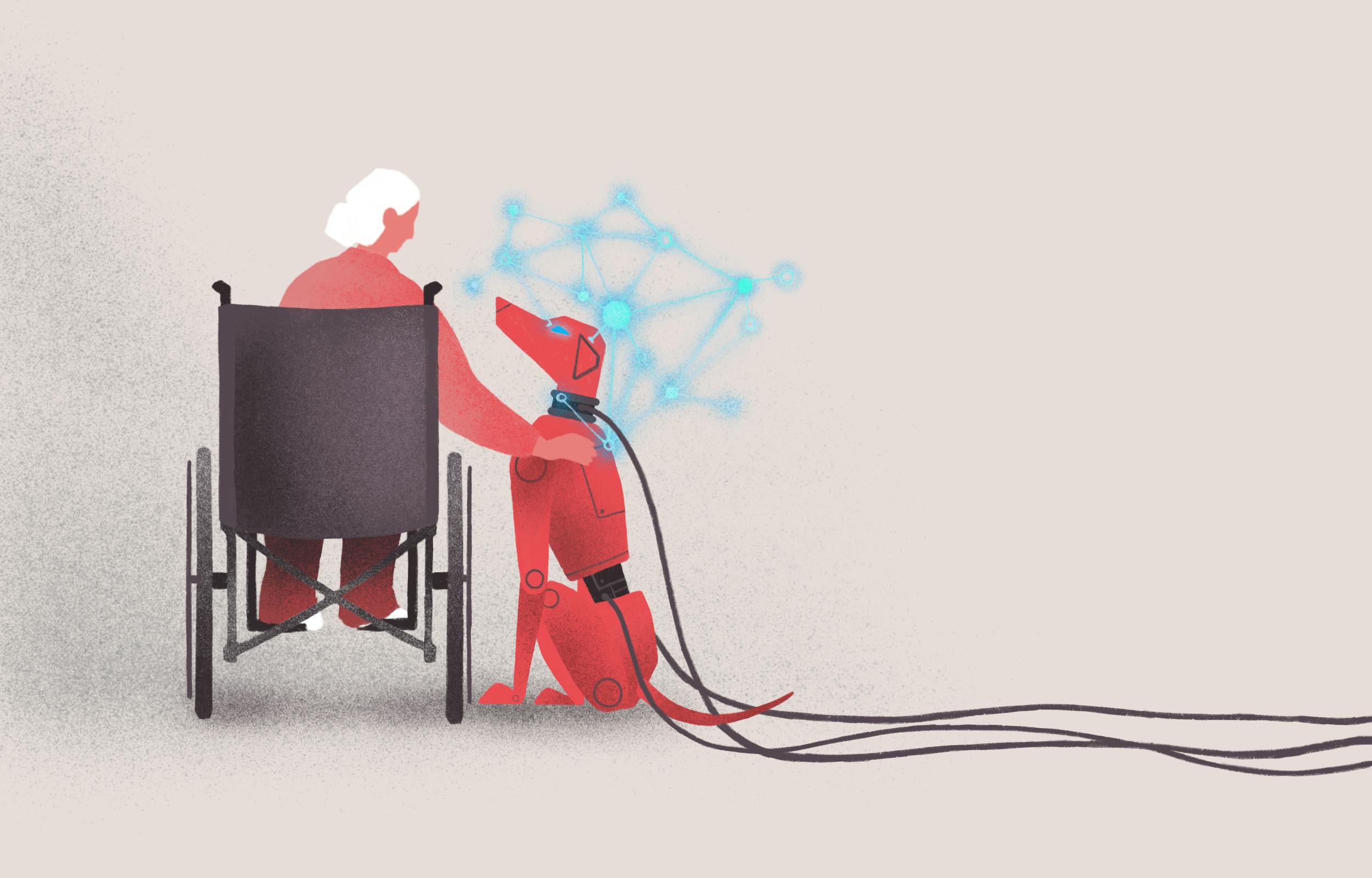Cuddly robots for dementia care
Would you give your grandparent a talking robot seal?
Studies have demonstrated that companion animals can be beneficial for Alzheimer’s and dementia patients. But taking care of an animal can be unrealistic for many.
What if a robot stuffed animal could provide the same function?
That’s the idea behind ‘carebots’ like dog robot Golden Pup and seal robot Paro. And the new guard of carebots? They’re even stranger.
But our question is: With elder care getting stretched thinner and thinner each year, might products like these help us bridge the gap?

So, what is a carebot?
Put simply, carebots are human-centric robots developed with anthropology and psychology in mind. They’re designed to interact with people how we interact with ourselves.
If you ask caregivers for patients with dementia, carebots are not a replacement. They’re an additional tool, a bit of hope when modern medicine gives them no other options.
As to the cuddly care robots themselves, Golden Pup is the more affordable option, retailing at $140. For a couple thousand more USD, you can have a robot seal developed in Japan that senses touch, light, sound, temperature—and was handled by former U.S. President Barack Obama.
At their best, carebots work not just because they’re cute or cuddly. They also have boundless attention, energy, and patience—unlike many human caretakers. They can add to an already strained careforce when it comes to meeting elder patients’ socialization needs. We see a model of how robotic socialization can make a difference in how assistive robots help children with autism develop social skills.
Plus, carebots can be more sophisticated than these high-tech stuffed animals. AI researchers are building carebots that can display a wide range of human expressions and use large language models (LLMs) to keep users engaged in endless conversation. And the complexity of possible conversations grows with each iteration. As does the approach—with some of the newest carebots in development looking less like stuffed animals and more like otherworldly blobs playing with light and sound.
Carebot critiques
Of course, carebots aren’t infallible at this state of development. Perhaps most importantly, they’re no replacement for a human caretaker at this point.
But thinking of them as a solution to the growing elder care shortage worldwide is certainly tempting. Especially as the proportion of older patients increases in many parts of the world. We can gain insight from Japan’s long-standing robot-assisted elder care programs, which have yielded mixed reactions.
One initial concern is that the LLMs used in the conversational carebots aren’t quite sophisticated enough to fulfill promises of seamless, realistic conversations. In one conversation with a carebot developed at Indiana University Bloomington, the carebot responded, “I’m sorry to hear that,” when the user told it that she had a sister.
Other pilot programs have found privacy concerns among staff interacting with the carebots. These aren’t unfounded. After all, to create a personalized experience, many of these robots do record and analyze users' actions and surroundings.
There’s also the ethical concern about ‘tricking’ dementia patients using the robots: Part of why they work is that patients often do not distinguish between the carebots and real animals or people.
Finally, the harshest critics of this technology rest on its purpose within the broader healthcare ecosystem. Are carebots simply a bandaid for an under-addressed, worldwide understaffing crisis made worse by an aging population?
As with most medtech innovations, we can’t treat these products as golden bullets. Dementia is and will continue to be a brutal disease for patients, caregivers, and providers to manage. But if a robot can make lifting a patient’s spirits and engaging their mind a little bit easier, we think it’s worth the hype.
As Kat McGowan put it in a Wired essay about carebot developers, “The gizmos they’re working on may be far in the future, but these scientists and engineers are already inventing something more important: a new attitude about dementia. They look head-on at this human experience and see creative opportunities, new ways to connect, new ways to have fun. And, of course, they have cool robots.”
Hope in the face of illness. And cool robots. That sounds to us like the best of medtech.